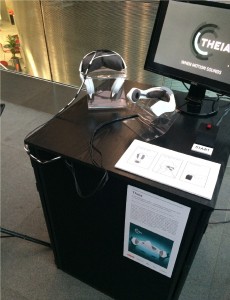Exhibition Open at Imperial College Main Entrance
Today is the first day of 3 day exhibition showcasing the work of this years Innovation Design Engineering (IDE) and Global Innovation Design (GID) students. As part of the Rio Tinto Sports Innovation Challenge the students undertake an intensive project development, having only 6 weeks to research, propose and produce a concept and prototype based around a key theme.
The Brief for this years challenge was to create an innovative product or sport associated with the Winter Paralympic Games and within one of four themes:
- Sport Engagement
- Extreme Sport
- Sports Protection
- Future Sport
There are 13 projects in total including among others:
- a flexible support system for the spine which immobilises the back after sever injury
- a suit that enables the user to slide on snow
- a concept sport where the participants row on ice
- a system to enable hemiplegic athletes to partake in speed skating
- a prosthetic limb for below knee amputee ski jumpers
The exhibition will run this week until Friday 14th February in the Main Entrance of Imperial College on Exhibition Road South Kensington.





